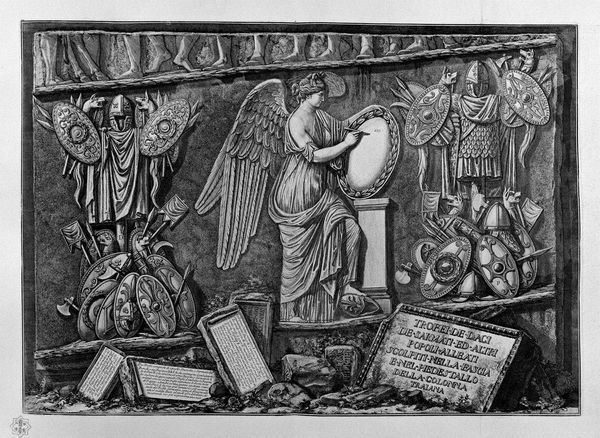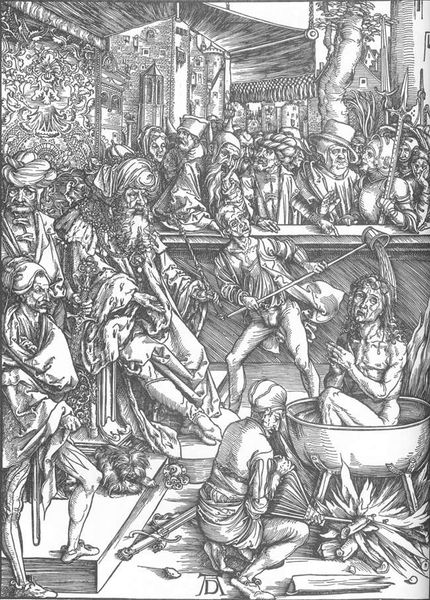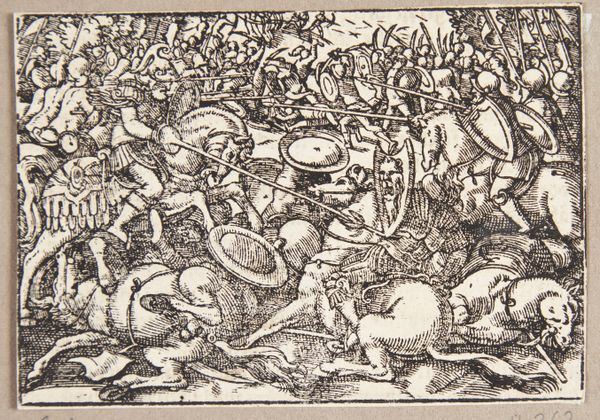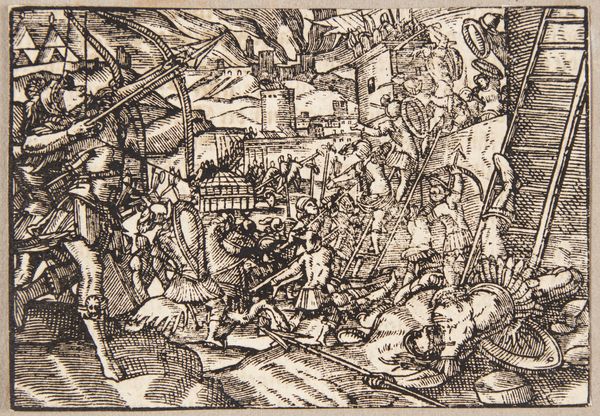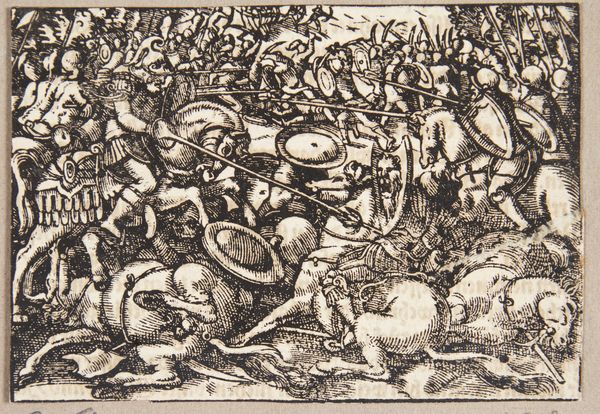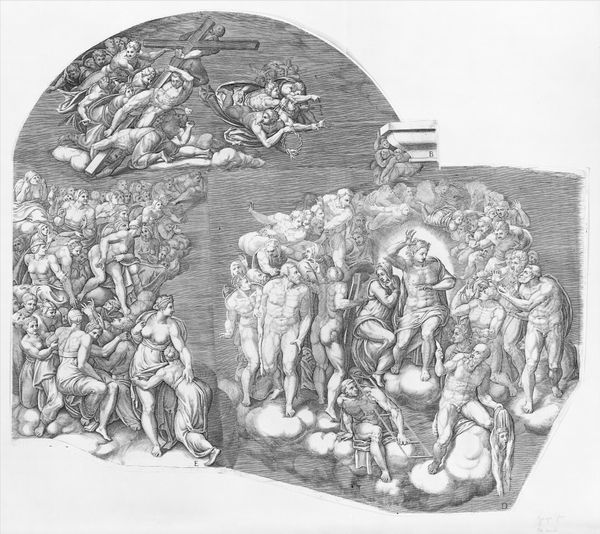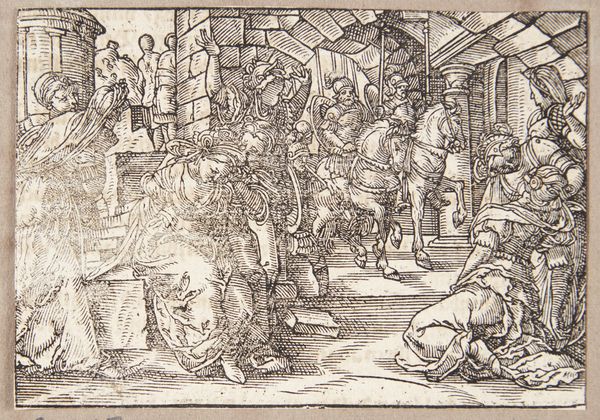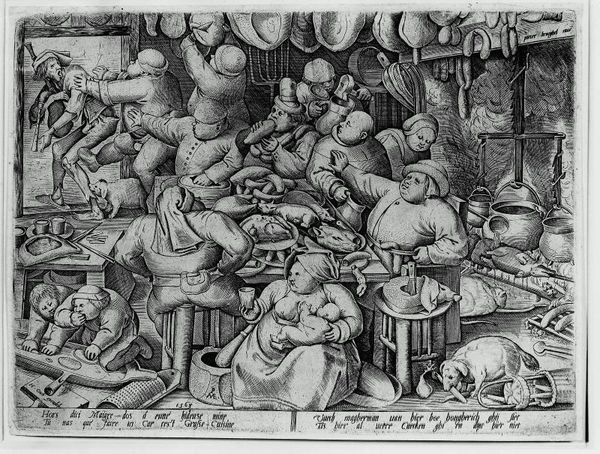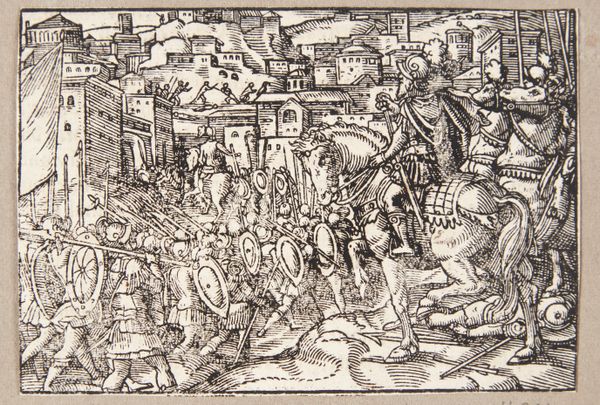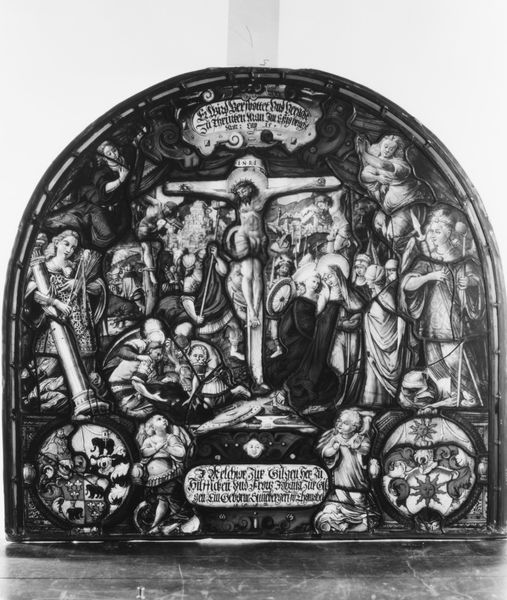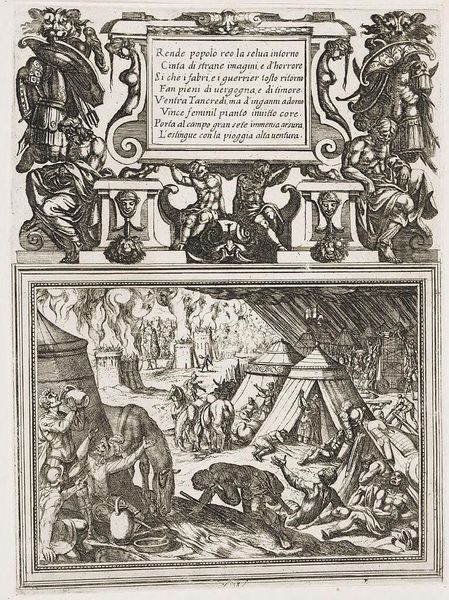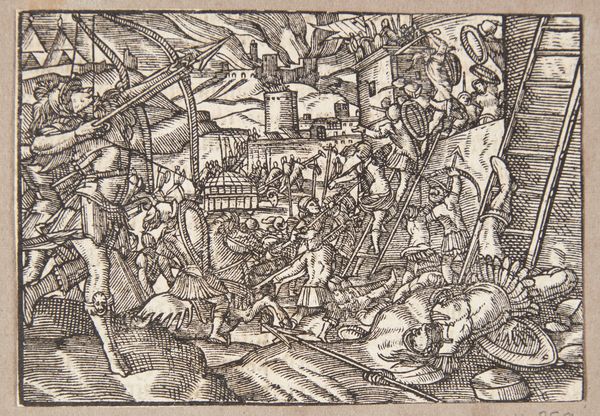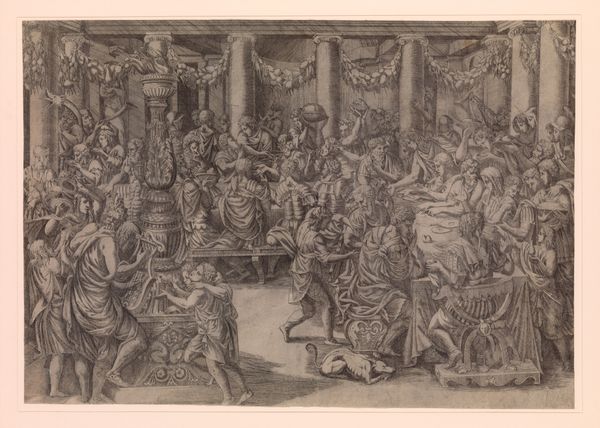
carving, metal, relief, sculpture
#
carving
#
metal
#
detailed texture
#
relief
#
figuration
#
11_renaissance
#
soldier
#
sculpture
#
horse
#
carved
#
history-painting
#
decorative-art
#
italian-renaissance
Dimensions: 3 7/16 x 4 in. (8.7 x 10.2 cm.)
Copyright: Public Domain
Curator: Just look at this flurry of action! This is Andrea Briosco, called Riccio's "Combat at a City Gate," dating back to the Italian Renaissance, sometime between 1500 and 1515. Riccio was working with metal to create this incredibly detailed relief. Editor: It feels almost feverish, doesn't it? A tight composition, all these intertwined bodies of soldiers and horses... a real sense of violence packed into a relatively small space. What kind of metal are we talking about? Bronze, perhaps? Curator: It’s more than likely bronze, given the period and Riccio's preference, yes. Bronze casting allowed for this incredible intricacy in the narrative. The level of detail he's achieved is astonishing; observe how each figure seems caught in its own desperate struggle, down to the minute musculature and weaponry. It could very well depict a scene lifted straight from the Roman Empire’s military annals. Editor: Precisely! Those rearing horses, the thrust of the spears – it evokes classical battle scenes. But, what do you think, what meaning lies within the "City Gate"? To me, gates have always represented more than just a physical boundary. Are we looking at a symbol of a culture at war with itself? Or is the meaning in that chaotic melee—a clash of order and disorder. Curator: I would venture both interpretations are possible. The gate does indeed represent boundaries – not just between physical spaces but psychological and cultural ones. And yes, there is that potent clash you note between civilization—represented by the architecture of the city—and primal conflict. It mirrors the inner turmoil present in humankind, the delicate balance between rationality and savage impulse. Editor: Look at the symbols being portrayed! Figures seem to have some attire we might now think of as Roman or Greek in influence. As though history is being unearthed and put on display here in metal form. Do you believe there's any commentary here, considering the work was constructed during a high point for wealthy city states such as Venice, or perhaps the Papal States and Florence? Curator: Absolutely. Consider the context of the Italian Renaissance—a period deeply influenced by the rediscovery of classical antiquity. Here we see Riccio, as he so masterfully does, evoking and reinterpreting those classical forms and narratives to reflect his own era's political complexities. And also, likely, as you inferred before, it very likely also includes observations on civic strength. It also perhaps provides commentary on the inherent vulnerabilities of even the most fortified city-states during this rather turbulent historical era. Editor: Ultimately it's that friction, isn't it, between ideals and reality, between the aspiration toward classical heroism and the brutal reality of warfare, that still resonates. A bronze echo, carrying the clamor of forgotten battles straight to our present-day sensibility. Curator: Perfectly put! It’s that enduring dialogue with history, rendered so palpably in metal, that continues to hold our attention after all these years.
Comments
No comments
Be the first to comment and join the conversation on the ultimate creative platform.
